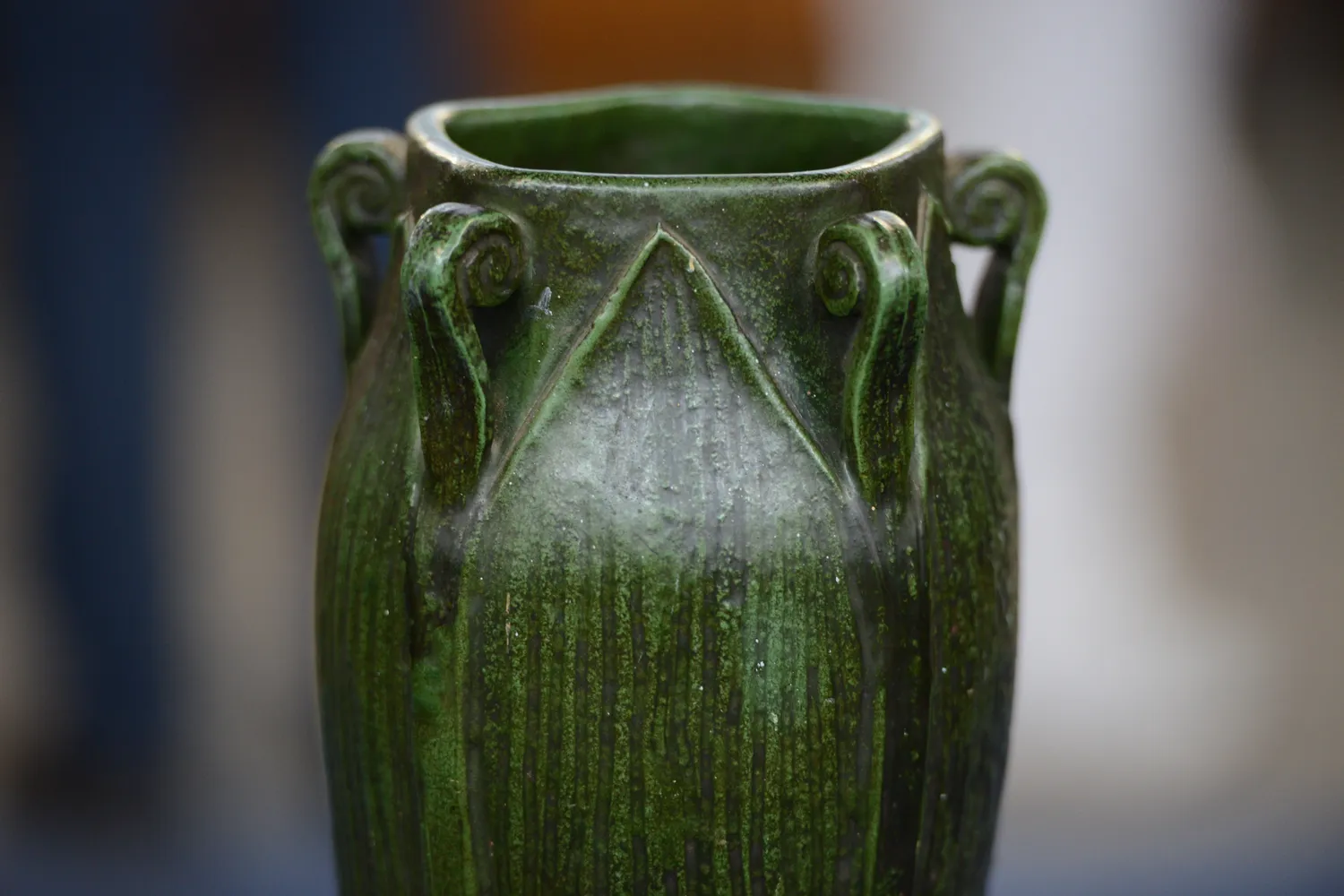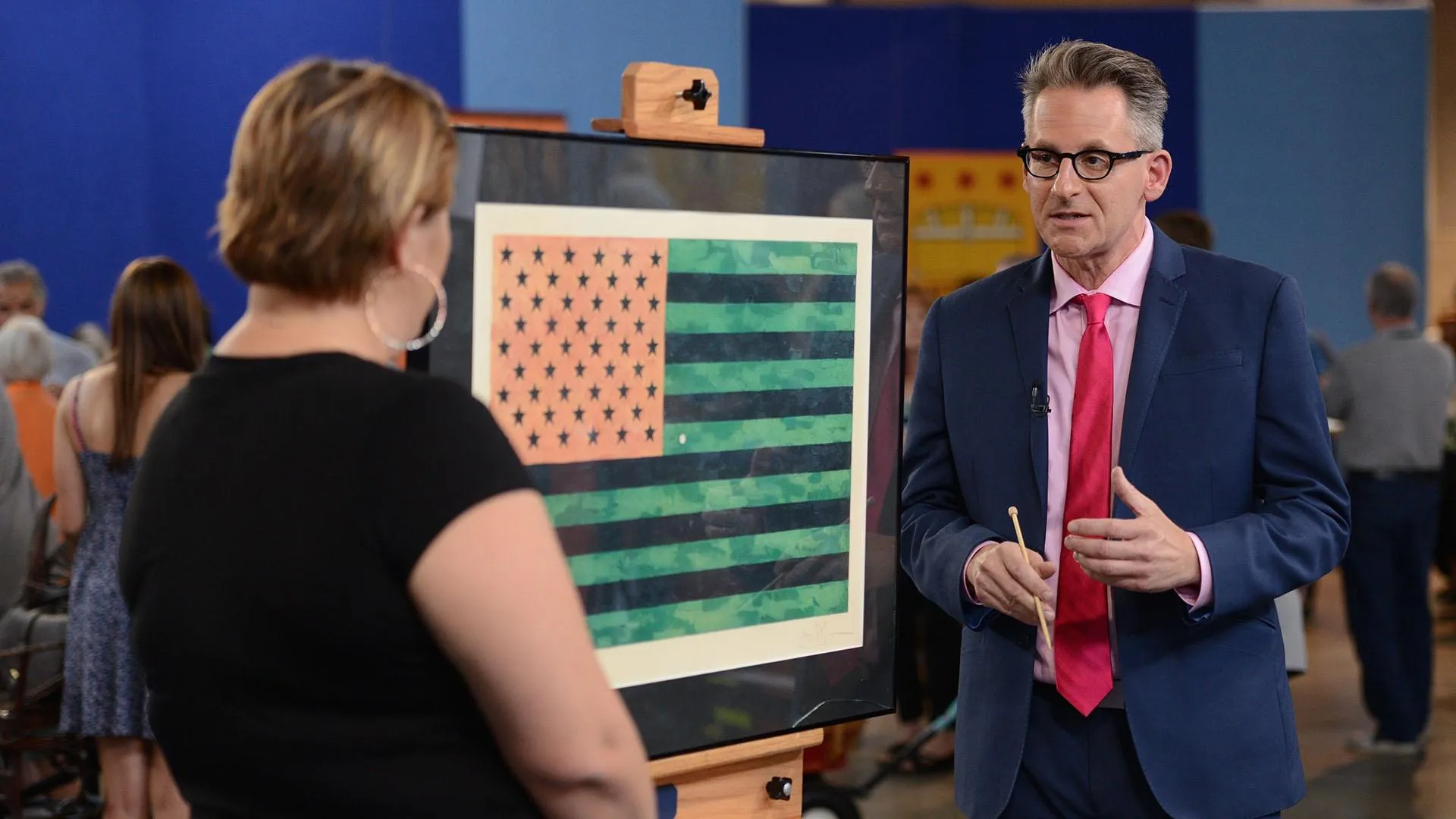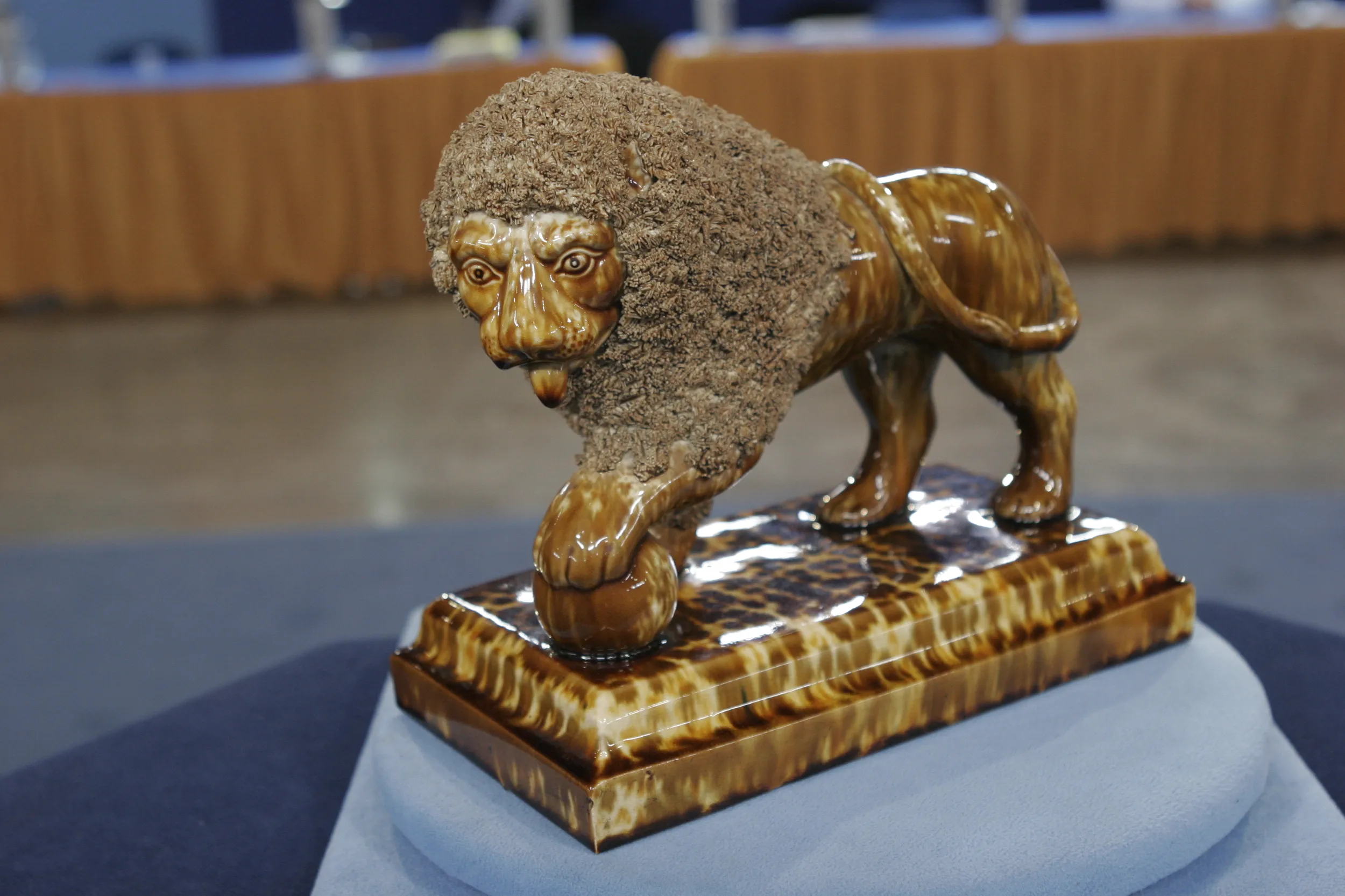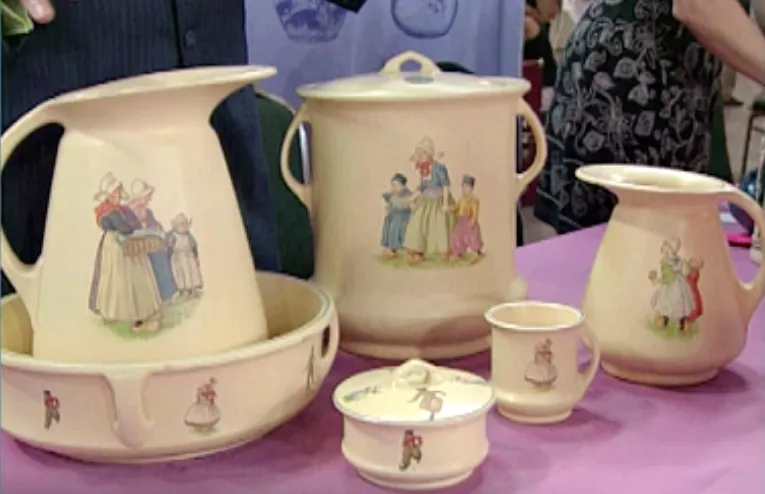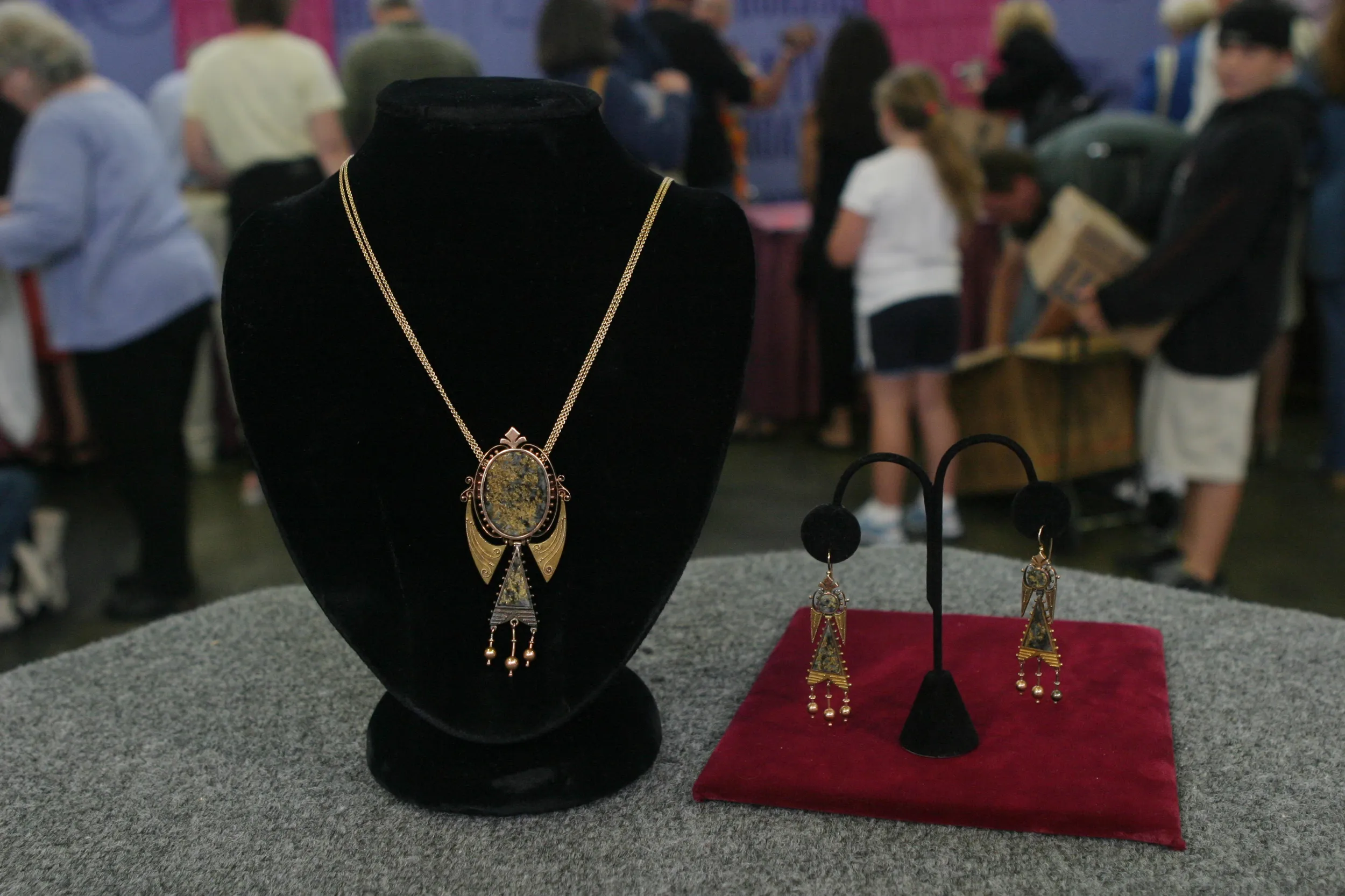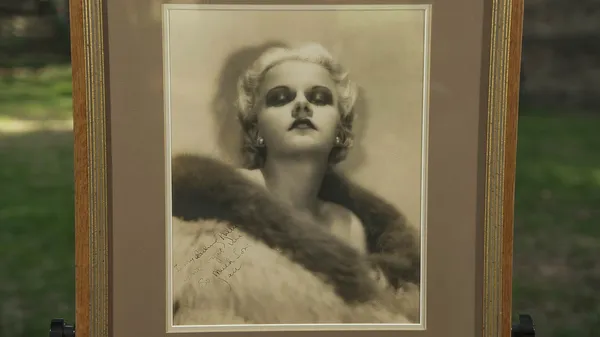GUEST: My husband's grandfather passed. He was about 100 years old. This was up in the attic in their house, and I told him to go get it and bring it down because I wanted it.
APPRAISER: And how long have you had it?
GUEST: Almost 30 years now.
APPRAISER: This vase was made by Thomas Wheatley. Thomas Wheatley was a potter from Cincinnati, Ohio, and in 1880, opened the T.J. Wheatley Company, where he made copies of a famous style of work called Limoges ware that other people in Cincinnati, Ohio, were doing. He filed a patent for the technique, eventually went out of business, and in 1903 formed another Wheatley Company, which is this one. And this company, also in Cincinnati, copied the work of Grueby Pottery in Boston, Massachusetts. So Wheatley was big into copying work that others did. And I mean, that's not necessarily a bad thing, because a lot of companies copied each other. I would date this piece, since he's copying a Grueby precedent, the Grueby precedent would have been made around 1900 to 1902, so I would date this to around 1905 or 1906. This is almost an exact copy of a vase that Grueby made: straight-sided vase with leaves encircling the top, and then these fern fronds forming tight little handles, covered in this vegetal matte green glaze. The difference between this piece and a Grueby piece is, were this Grueby, the pot itself would be hand-thrown on a wheel. You'd see the finger marks on the inside. And then further, these leaves that we see on the outside of the vase, that thrown vase would have clay stuck to the side and the leaves would be sculpted out with a carving tool, as opposed to being part of the mold that was used to make this piece. And finally, these handles would be formed from flat pieces of clay, where they would stretch them out and roll them and apply them to the side at Grueby, rather than cast and applied as they are here. So Wheatley approximated the Grueby look in a very good way. It's a fairly honest representation, but at a much lower cost. The Grueby's green glaze is a signature. Over 100 companies copied the matte green glazes that Grueby used. When you walked up to the table, I knew this was Wheatley because this is their signature glaze.
GUEST: Ah.
APPRAISER: The Grueby glaze would be a little bluer in color, a little less texture, a matte crystalline surface to it. There'd be a lot more distinction to the Grueby vase. There is one issue with this pot. It's not marked, or if it's marked, the bottom is covered with a sufficient amount of glaze that we can't see it. But there's a crack running through the bottom of the piece that does come up the side, which is going to limit the value. It's a pretty good-sized body crack. I still think because it's such an extravagant example, at auction, it's still worth $1,000. Without the crack at auction, it's about a $3,000 piece. And if this were a piece of Grueby made a couple years earlier in Boston, Massachusetts, at auction, it'd be about $7,000.

